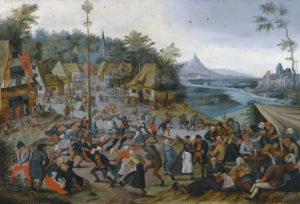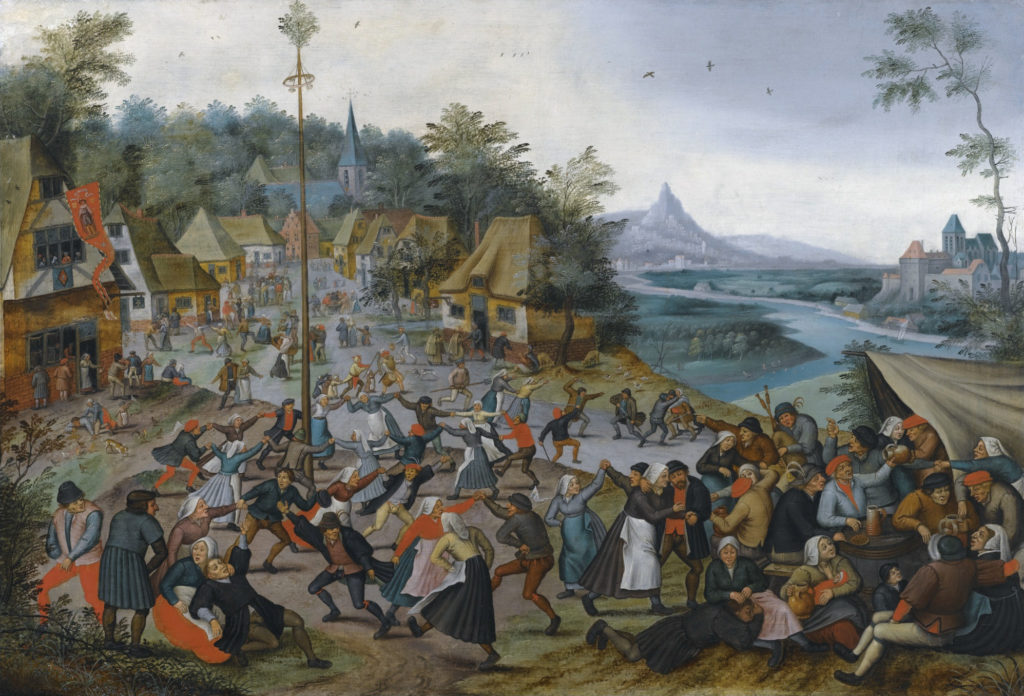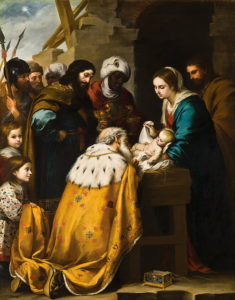 With every new year, the War Season is also getting started in the SCA. The Society Calendar boasts of seven Wars and two three-day weekend events to enjoy between February and October. In other words, the party is just getting started!
With every new year, the War Season is also getting started in the SCA. The Society Calendar boasts of seven Wars and two three-day weekend events to enjoy between February and October. In other words, the party is just getting started!
As we prepare our clothing, armor, and provisions for War, we should also take time to prepare for our personal safety. Now, most of the time, absolutely nothing happens, but a little preparedness and forethought never hurt anyone.
Hopefully the following tips will be beneficial to the less experienced War-traveler and serve as a reminder for the veterans.
Environmental Safety
In this instance, I’m talking less about protecting the environment (which is important!) than I am about protecting yourself from the environment. If you’re like me, you may not be a seasoned camper. Of course, SCA camping is the half-sister of glamping once you get your period encampment down, so there’s that comfort! That said, it is sometimes difficult to transition from the comfort of air conditioning, flushing toilets, and running (hot) water. On top of that, it is important that you prepare yourself for the environment’s hazards as well as its discomforts.
Insect protection
Bugs live outside. Most of them are fine when left alone, but, for many of them, you represent a tasty food supply. (To paraphrase Merry: “What do they eat when they can’t get Huscarl?”) The bugs that don’t want a sampling of your blood for their sustenance still pose a nuisance, especially when you open your tent to find it filled with what my family calls “chiggers.” (Tiny flying bugs.)
The first thing I recommend doing when you set up your camp is to sprinkle the ground you intend for your tent with Borax. This will, mostly, keep insects out of your tent. (I think I saw exactly one bug crawling up the inside of my tent wall at Gulf Wars.) I normally pack extra boxes to sprinkle more along the outside of my tent in the event it rains and because friends will ask to use some for their camps.
To protect your person from insects as you go through the day, be sure to pack Deet and/or citronella candles. I personally find that all bugs (especially the bloodsucking ones) absolutely hate tea-tree and lavender oils, so I put several drops of each in a spray bottle of water and liberally spray my family with when we’re going to be walking in fields, etc. The spray bottle also doubles as a room and linen freshener due to the anti-bacterial properties of both oils so it’s well worth having on hand. Also, be sure to have extra tea towels to cover your food with during preparation and try to keep your campsite clean of things like food debris that will attract pests. (Probably not just the insect kind.)
Lavender/Tea Tree Oil formula: mix 30 drops lavender oil two about fifteen drops tea tree oil in a 12 oz spray bottle of water. You can adjust the oil proportions to be stronger depending on need, but most people often find the smell of tea tree repulsive, so I use more lavender to mask it.
UV Protection
Yes, rays from the sun help the body to absorb vitamin D, but when you spend a week living outside, fighting or water-bearing in no shade, and attending court in shade that doesn’t stand a chance against the angle of the sun, you’ll discover that it’s very different from when you’re only spending a couple of hours on a walk. Sunscreen is your friend. Purchase a waterproof sunscreen and reapply it according to the directions, especially if you go swimming or perspire too much. If you have older children, try to explain sun-safety to them. (Younger children, you can just lather whenever you feel they need it.)
I personally recommend packing a good straw hat or a parasol, and wearing clothes that cover as much skin as is comfortable. (More on that in the next section.)
Also, just because the sun isn’t out doesn’t mean you should skip on sunscreen. On an overcast day, those clouds are acting like magnifying glasses for those UV rays and you are the ant on the sidewalk. That same rule applies to the sun’s reflection on a lake or pool and its magnification in the water when you or your children are swimming.
Heat
This is probably the greatest discomfort at a summer War and, lately, it’s seemed to get worse each year.
They may seem extravagant in cost, but canvas tents are worth every penny in regard to comfort. If cared for properly, they’ll last years, and add to your medieval experience profoundly. They function more as tiny hotel rooms and you’ll have the space for a comfortable air mattress and furniture to make your 7-14 day War experience more enjoyable. Plus: Heat defense!
Canvas breathes better than nylon, preventing build up of humidity inside the tent. Canvas does not transfer heat as quickly as nylon, keeping the tent from becoming unbearably hot as soon as the sun hits it. That also works in reverse in cold weather, keeping warmth in the tent when you want it there.
Next, bring a hand fan, perhaps make a swamp cooler, and bring extra buckets you can fill with ice water to rest your feet in and bring your core temperature down. (Extra points if the buckets don’t look glaringly modern!)
Linen fabric is your friend! It wicks moisture away from your body and when the breeze comes through, the damp-ish fabric acts as a personal air conditioner. Cotton does not do this. As ladies know, dresses are much cooler and provide much more “ventilation” than trousers. At Lilies, my husband wears a tunic that falls beneath his knees, his boxer briefs, and nothing else. (Our medieval counterparts weren’t idiots.) Many people find that Roman and Grecian garb is the most comfortable at foreign wars. As someone who is very photosensitive, I find I’m actually more comfortable in longer sleeves as long as I’m wearing linen. The fabric protects my skin from the sun and I’m no cooler when I wear a mundane t-shirt.
Be sure to drink plenty of water, make your kids drink lots of water, and take breaks as needed. If it gets too rough, go sit in the air conditioning of your car for a little bit or go into town for dinner. If you find you truly struggle with the heat, you can also stay at a local hotel. (There’s no law that you have to camp on site!) This year at Lilies, I will be about seven months pregnant. Fortunately, my Lady Mother lives in the Kansas City metro area, so my husband and I will be commuting to war from her house so that I can have a reprieve from the heat. Ultimately, we all must and should make the best decisions for our own health and our children’s.
Water
Rain likely won’t harm you, but it can destroy your stuff. Keep everything except your bedding in water tight containers and a fresh change of clothes in your car so you have something dry to change into in the event of a storm.
Always set your tent up with the door facing down hill if you’re on an incline. As soon as your tent is set up, dig a small trench around your tent to divert any water flow. (If you do it when you set up, then you won’t have to remember it when it starts raining.)
If you have a canvas tent and it rains during the last couple days of war, set it up in your back yard at home to let the sun dry out the moisture. When you pack a canvas tent that’s damp, you’re creating a moldy environment that will destroy your canvas and turn your comfortable camp home into an allergy and disease trap.
Know Your Plants
Wooded areas can have poison oak and ivy. Be sure to refresh yourself so you can recognize and avoid both.
People Protection
In all honesty, this is the section that is the most difficult to write about because people tend to be very strong and vocal in their stances on social issues in the SCA, namely the idea that incidences of crime or personal harm are few and far between and they happen in someone else’s group, not theirs. My goal in this article is to be as neutral and yet as pragmatic as possible.
I’m sure many people can say with me that one thing they love about the SCA is that it can create a culture in which chivalry and honor are more than words we dissect in a college class on Tennyson. There’s a small town culture at war where we end up making stone soups and helping each other set up our camps. That type of community is as real as you and me and I’m very grateful for it. However, equally real is the reality that humans are flawed and at war (especially the larger ones like Gulf Wars and Pennsic) there is going to be a larger crowd of people you have never met, when you meet them, you will both be wearing clothes you would not normally wear, and you will give each other false names. (Some gentlemen will even give a false SCA name in certain sensitive situations. Especially if your father is a hard-hitting knight.) This situation in itself is not inherently, but can potentially be, problematic. Moreover, at War, especially Pennsic, you’re more likely to encounter non-SCAdians who are there to let their weird out and may have a very different moral compass or idea about what actually is an SCA event.
That said, SCA Wars are events where you will find yourself making new friendships and deepening current ones. To keep the bad incidences few and far between, and something that doesn’t happen to you, I’ve posited the following recommendations.
Follow the Site Rules
Fully follow them. The event stewards are aware of possible environmental hazards and make the rules accordingly. Their instructions should be your first go-to at any event.
Valuables
I highly recommend leaving your non-SCA related valuables at home. It’s less likely that your belongings could be stolen at an event than it is that you could simply lose them in the zoo of activity that is an SCA war, not to mention all of Mother nature’s greenery surrounding your camp. Chains break, rings slip off, pockets and pouches get holes in them, and, in our haste to pack and beat the storm out of camp, we can knock things over and lose them.
(Truly, I have, personally, left my basket unattended more times than I can count and my items were all left undisturbed. Usually when a possession walks off, it’s because someone mistook your item for theirs due to similarity and it’s often promptly returned.)
In regards to jewelry, some women invest in a “medieval” wedding ring, not only to avoid being blatantly modern, but so that they don’t risk losing their nicer, more expensive jewelry at an event. Not many modern jewelry items look medieval, so leaving them at home kills two birds with one stone.
Thanks to modern technology, it is no longer necessary to bring copious amounts of cash for spending money to war since most vendors are equipped to accept debit and credit card payments. Even if they can’t, you can always ask them to put the item on hold while you go into town and use the ATM. I recommend bringing only enough cash to pay gate, pre-pay the Broken Harp at Lilies, and have maybe $50 for petty cash. Keep your wallet with you at all times like you normally do and you
should be fine.
I keep most of my belongings, aside from furniture, in my tent at all times to prevent them blowing away, etc. This includes coolers because I currently don’t have a period box covering and cover it with a blanket. Again, I truly feel that the most common culprit of property loss at a War are the elements, but having your belongings in your fabric house will make it more difficult for someone to simply walk off with them, especially in a crowded camp.
Coolers Et Al
If you’re concerned about opening up your cooler and finding that your supply has been depleted, simply keep your cooler into your tent. Now, I have never encountered a problem with this happening, but, if you’re camped in close quarters and it’s dark, coolers all start to look alike, especially if one is a little tipsy and there’s late night revelry going on. It’s not uncommon to for a gentle to say to their friend, “Just grab a beer from my cooler, it’s the blue one around the corne,” and it’s possible that the friend may get something from the wrong person’s cooler by mistake. Also, teenagers sometimes do stupid things like purloin beer when no one is looking. If you install a lock on any of your gear and have it in plain site, less upright people might assume you have something more valuable in there than Woodchuck, so I don’t personally recommend it unless truly necessary.
Personal Safety
This issue probably pertains to women more than any other group, simply due to a dark, internal force that has afflicted humanity since its beginning. This is especially true for single women (including single mothers) and lesbian women because the male figure of a boyfriend or husband acts as a built-in protector and deterrent for predators.
Yes, there is an honor system in the SCA, but, statistically speaking, not everyone at an SCA event is likely to ascribe to that. For better or worse, it is very easy, in an environment of knights touting honor, to become too comfortable and let our guard down too much in a group that is equally mixed with strangers as well as friends. High morals are preached in churches and yet scandal still occurs because it’s impossible for a group to be immune to the plights of humanity when it is populated by humans; therefore, we must simply continue to do unto others and utilize our best judgement
First of all, always have a buddy system and avoid traveling away from the crowd alone at night. Single persons, especially women, present an easier target for predators. If you’re camping alone, you should be able to find a social group to tag along with and it wouldn’t hurt to have pepper spray on your person like you do (or should do) at home.
Secondly, get your own drinks and keep them in your hand at all times. Yes, the handsome fighter or flirty lady is being very kind to offer and I’m sure they won’t do anything, but it’s better to be safe than sorry. Many a woman (and the occasional man) has lost track of her (or his) drink at a party and found herself in unfortunate circumstances.
On that same vein, have a care of whom you accept drinks from. If the person offering has been going around with a bottle filling everyone’s cups with samples of their wares, enjoy! However, if someone hands you a cup and says, “Hey, you should try this,” and you haven’t seen them drink from it themselves, reply, “Thanks, but I think I might be getting a cold and I wouldn’t want you to catch it,” or “Thank you, but my head won’t forgive me in the morning if I switch drinks.” Again, the person offering probably has no malicious intent, we share drinks a lot in the SCA, but it’s better to exercise a little caution than not. If anything, it may help you avoid catching the [Insert Event Name] Plague.
Thirdly, male escorts are galant and should be applauded, but try to stick to your girlfriends unless you know the gentleman very well. However, please accept an escort you know you can trust at night. As mentioned earlier, a male presence can deter predators, but always try to travel in groups. It will not set feminism back one inch and we’re all trying to make our way in a world that is sometimes perilous and we should be there to help each other.
The writer is aware that, statistically, the majority of sexual assault victims are attacked by people they know and in familiar environments; however, that fact does not change the pertinence of the given advice, even if the premise of the hypotheticals presented here assumes that assailants will be strangers.
None of us want to be or want to see our friends in a position, to put it delicately, of being in the wrong section of a statistic. While there are instances that simply cannot be helped despite our best efforts, our best efforts are still worthwhile.
Child Safety
The Ministry of Youth is here to make the SCA fun, accessible, and appealing to your children so they won’t fight you every time you go to an event. It is not a baby-sitting service and you should not leave your children there unattended for extended periods as a courtesy to the volunteers.
We often see children wandering independently through site at war and the rule of thumb is to be sensible: give your children the liberty they’ve proven they can responsibly handle, no more, and be sure to dog tag your kids in case they get separated from you for some reason. There are lots of parents and kind-hearted people at events who will stop and help a distressed child separated from their family should that happen; however, having been a helping adult in that situation, it’s difficult when children are too young to explain to whom they belong, so identification helps.
Be sure to read the site rules regarding minors carefully as each event can differ greatly depending on the group, the site, and even the event steward.
When it comes to toddlers, I find that a good, long belt makes a nice leash to keep them out of places you don’t want, them like list fields and pottery shops.
Be Your Brother and Sister’s Keeper
The small-town community works when the people within it look out for one another. If you see a child that seems lost, take a moment to stop and ask, rather than assume everything is alright. If your girlfriend is clearly enjoying Bacchus’ gift surrounded by people not in your group, check in to make sure she’s in control of her faculties and maybe watch her out of the corner of her eye to see how the situation develops. Offer something to drink to visitors in your camp: it’s part of chivalry and courtesy and vital in the heat. Close your neighbors tent doors and tighten their ropes if it starts raining while they’re wandering site… Simply put, follow the Golden Rule. That’s what makes our community safe and strong.
SCA Wars are wonderful events: rarely are such compendiums of classes available or so many activities at other venues. They’re the places where the Middle Ages can truly come to life and where friendships, even marriages, are forged. Some of the best friends you may ever have, you’ll meet at War and the warmth of human kindness will touch and inspire you. This missive is not intended to undermine the “magic”, but to protect it and preserve it from being spoiled for even one person by a negative experience.
Have a great War!








You must be logged in to post a comment.